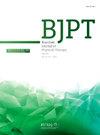Dry cupping therapy has no effect on pain, function, or quality of life in women with knee osteoarthritis: Randomized placebo-controlled trial
IF 3.2
3区 医学
Q1 ORTHOPEDICS
引用次数: 0
Abstract
Background
Efficacy of cupping is known to be controversial, and the heterogeneity of the studies contributes to the uncertainty about its real benefits.
Objective
To evaluate the effects of dry cupping therapy on pain, disability, functional capacity, and quality of life compared to sham cupping in women with knee osteoarthritis (KOA).
Methods
This is a randomized placebo-controlled trial. Women with KOA aged 50–75 years were randomized into two groups: an experimental group, (receiving dry cupping therapy) and a control group (receiving sham cupping). Treatments consisted of 12 sessions, for 15 min, 2 × /week, for 6 consecutive weeks. Groups were evaluated at baseline (T0), 3 weeks after randomization (T3), at post-intervention or 6 weeks after randomization (T6), and 10 weeks after randomization (follow-up: T10). The primary outcome was pain intensity at rest or during movement, and secondary outcomes were the Global Perceived Effect (GPE), 30-seconds sit-to-stand test (STS-30), disability, 40-meter Fast-paced Walk Test (40mFPWT), and 8-step stair climb test (8-step SCT).
Results
A total of 62 women with KOA were recruited. We observed a significant within-group reduction for the primary outcome (i.e., pain intensity at rest and during movement) and for some secondary outcomes, there were no differences between groups for all variables in any of the timepoints.
Conclusion
Dry cupping therapy was not superior to sham cupping in improving pain, functional capacity, and quality of life, and in GPE in women with knee osteoarthritis.
Trial registration
NCT04331158
干罐疗法对女性膝骨关节炎患者的疼痛、功能或生活质量没有影响:随机安慰剂对照试验
众所周知,拔罐的功效是有争议的,研究的异质性导致了其真正益处的不确定性。目的比较干拔和假拔对女性膝关节骨性关节炎(KOA)患者疼痛、残疾、功能能力和生活质量的影响。方法采用随机安慰剂对照试验。年龄50 ~ 75岁的KOA女性随机分为两组:实验组(接受干罐治疗)和对照组(接受假罐治疗)。治疗共12次,每次15分钟,2次/周,连续6周。各组分别在基线(T0)、随机化后3周(T3)、干预后或随机化后6周(T6)和随机化后10周(随访:T10)进行评估。主要结果是休息或运动时的疼痛强度,次要结果是整体感知效应(GPE)、30秒坐立测试(STS-30)、残疾、40米快节奏步行测试(40mFPWT)和8步爬楼梯测试(8步SCT)。结果共纳入女性KOA患者62例。我们观察到主要结果(即休息和运动时的疼痛强度)和一些次要结果在组内显着降低,在任何时间点的所有变量在组间都没有差异。结论干罐治疗在改善膝关节骨性关节炎患者的疼痛、功能能力、生活质量和GPE方面并不优于假罐治疗。审判registrationNCT04331158
本文章由计算机程序翻译,如有差异,请以英文原文为准。
求助全文
约1分钟内获得全文
求助全文
来源期刊
CiteScore
6.10
自引率
8.80%
发文量
53
审稿时长
74 days
期刊介绍:
The Brazilian Journal of Physical Therapy (BJPT) is the official publication of the Brazilian Society of Physical Therapy Research and Graduate Studies (ABRAPG-Ft). It publishes original research articles on topics related to the areas of physical therapy and rehabilitation sciences, including clinical, basic or applied studies on the assessment, prevention, and treatment of movement disorders.

 求助内容:
求助内容: 应助结果提醒方式:
应助结果提醒方式:


